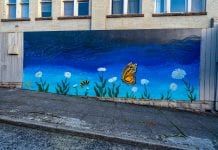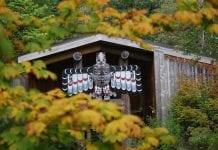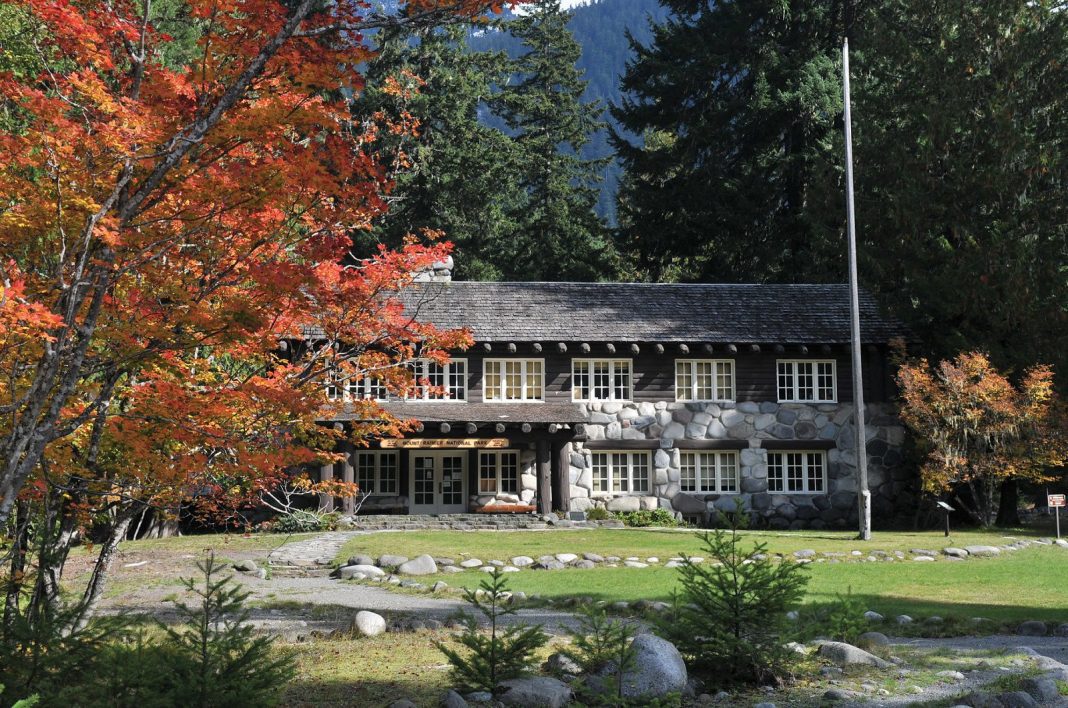Nestled in the picturesque landscapes of the breathtaking Mount Rainier National Park, the Longmire Buildings stand as a testament to the region’s rich history and enduring spirit. These historic structures are among the most prominent examples of the National Park Service rustic style in the national park system, having witnessed the evolution of Lewis County from its early settlement days to its growth as a popular tourist destination. Rooted in a legacy that spans over a century, today, the three Longmire Buildings have all been designated as National Historic Landmarks, forming part of the Longmire Historic District, which hold a significant place in the hearts of locals and visitors alike.
Longmire Administration Building
The Longmire Administration Building stands as the most remarkable and spacious among the three structures. Taking architectural direction from buildings in Yosemite National Park, the construction of the two-story design is characterized by sturdy boulder rubble up to the second-floor windowsills, transitioning to a log-frame structure for the upper level. The building’s entrance boasts a front porch crafted from exceptionally hefty, peeled logs, creating a unique and inviting appearance. Such elements were painstakingly sought out by a team of designers led by Thomas Chalmers Vint of the National Park Service Landscape Engineering Division.
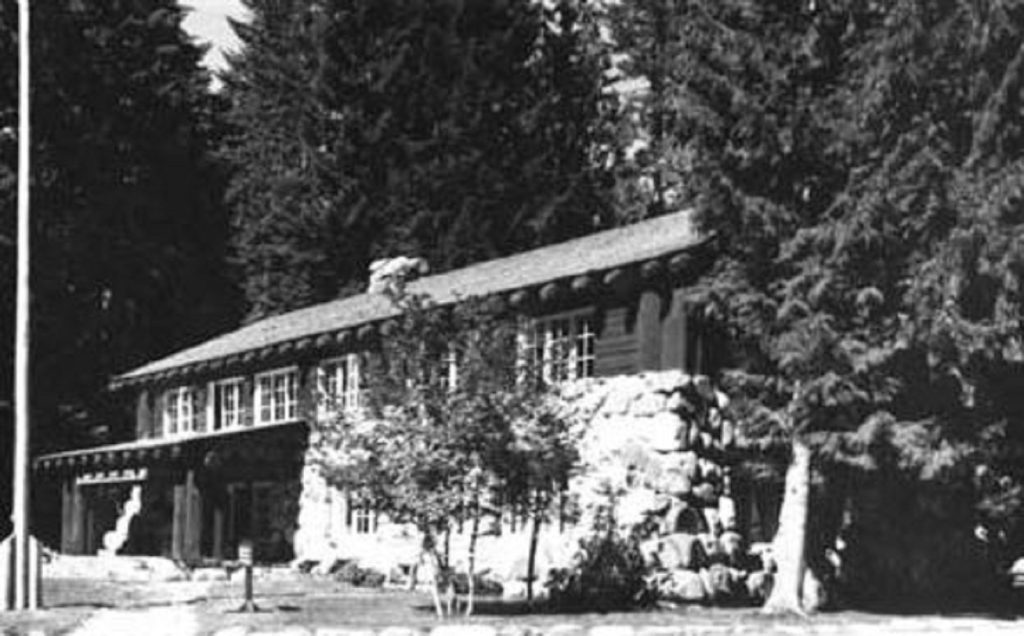
Initially serving as the park’s administrative headquarters, this building accommodated the park’s superintendent’s office and engineering support activities. However, with the implementation of the Mission 66 program, a new headquarters was constructed just outside the park’s boundaries, prompting a transformation for the Administration Building. Then, it took on its new role as a visitor contact point and maintenance headquarters, still playing a vital part in the park’s operations.
While the interior has undergone minor alterations since its construction, its original character is unchanged. Passing through the entry porch, one can access a reception room adorned with a stone fireplace, offering a warm and welcoming atmosphere. On the upper level, a conference room and various offices cater to the administrative needs of the park. Mechanical equipment and a jail cell can be found in the basement, serving practical functions beneath the building’s grand exterior.
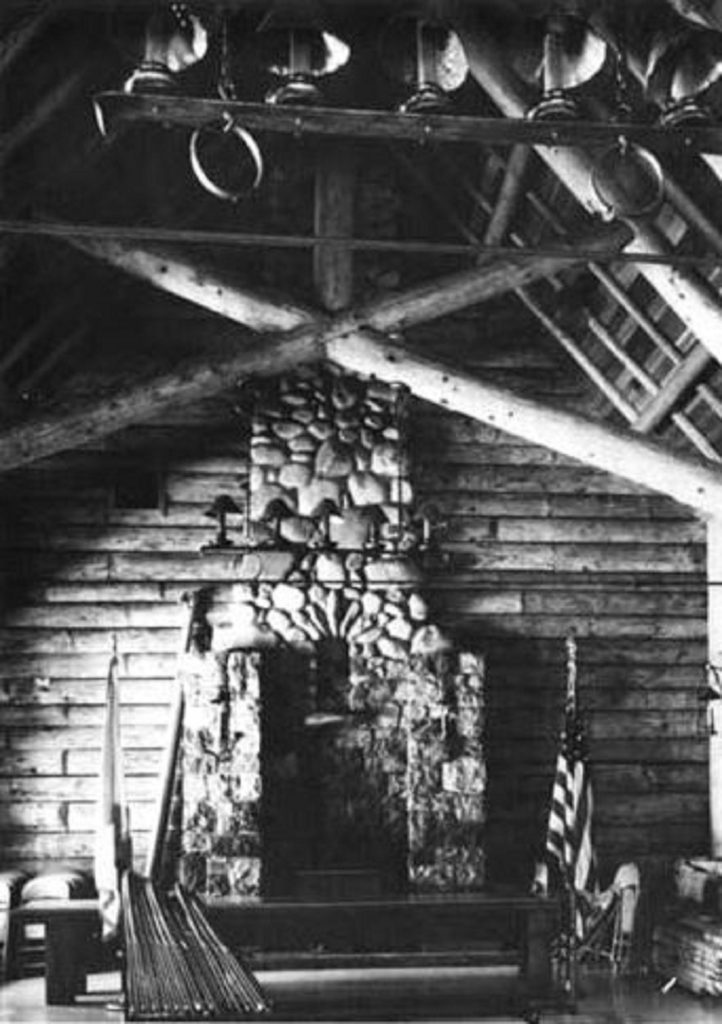
Longmire Community Building
Of the three Longmire Buildings, the first to be constructed was the Longmire Community Building in 1927 across the Nisqually River. Little has changed since its original design by Thomas Chalmers Vint, maintaining its T-shaped frame that rests upon a concrete foundation finished with a stone veneer, supporting a sturdy wood frame superstructure. Within its walls is a large community room, measuring approximately 60 feet by 30 feet, and an accompanying subsidiary wing housing toilets and staff quarters.
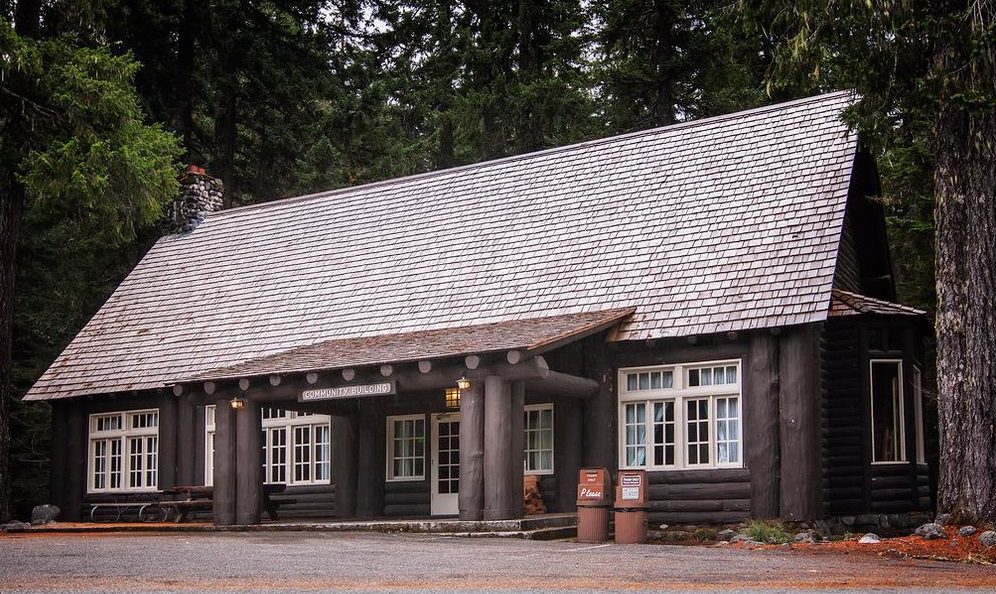
As visitors approach the building, a deep porch gracefully occupies one bay in front of the community room, beckoning them to explore its warm embrace. The exterior walls are adorned with a log-slab veneer, an homage to the area’s rustic beauty and the timeless charm of log construction. The community room’s interior showcases exposed scissor-truss log roof framing, complemented by a unique large stone fireplace at one end, featuring a distinctive mix of roughly squared stone and round glacial boulders. At the opposite end, a small stage in a projecting bay adds to the room’s versatility and charm. Original furnishings include light fixtures and log tables resembling those at the Paradise Inn.
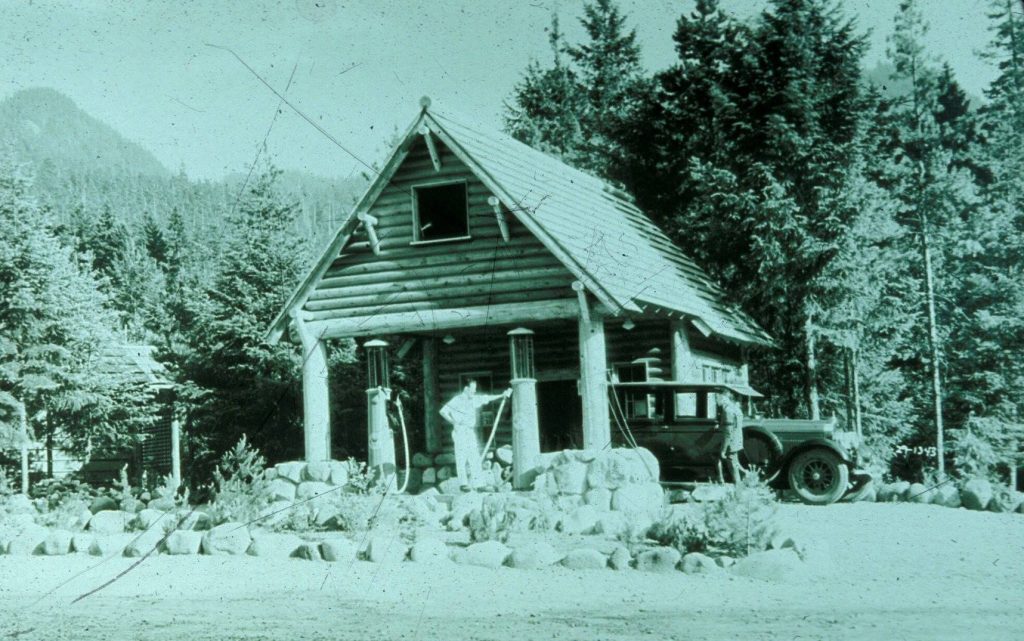
Longmire Service Station
Constructed in 1929, the Service Station provided gasoline and basic services to early park visitors, a vital service as Mount Rainier was the first national park to allow visitors to visit by automobile. The building features a drive-through covered bay with gas island supports in the front half styled in the manner of the time, an office in the other half, and a steeply pitched attic. Stone-faced concrete extends to sill level, while the upper frame wall is clad with log slab siding, and the roof is adorned with cedar shingles. An attic apartment is accessible via an exterior stairway.
As one of the best surviving examples of a rustic gas station in the national park system, the service station portrays travel history within the park. The Transportation Exhibit inside the service station is open daily when the Longmire Museum is open. An outdoor Service Station Exhibit Panel, part of the Longmire Historical Tour, is located nearby during the summer.
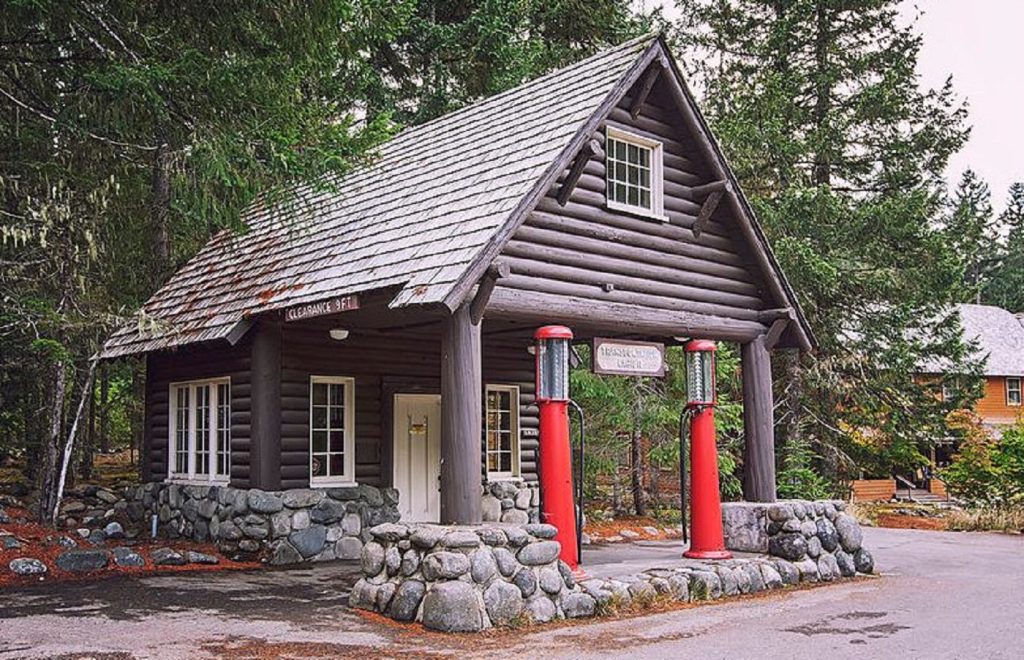
Besides these three historic structures still graciously welcoming today’s visitors within what is now the Longmire Historic District, an additional 55 contributing buildings make up the rest of the district. Together, these structures comprise the largest concentration of National Park Service rustic-style structures in the park, making the district one of the most notable groups of such facilities in any U.S. national park. Each one stands as a living reminder of the region’s history, from the adventurous spirit of James Longmire, who was one of the first settlers of the mountain, to the evolution of the Mount Rainier National Park system. Today, these structures remain, inspiring generations of visitors to appreciate the awe-inspiring landscapes and the legacy of those who came before them.



















